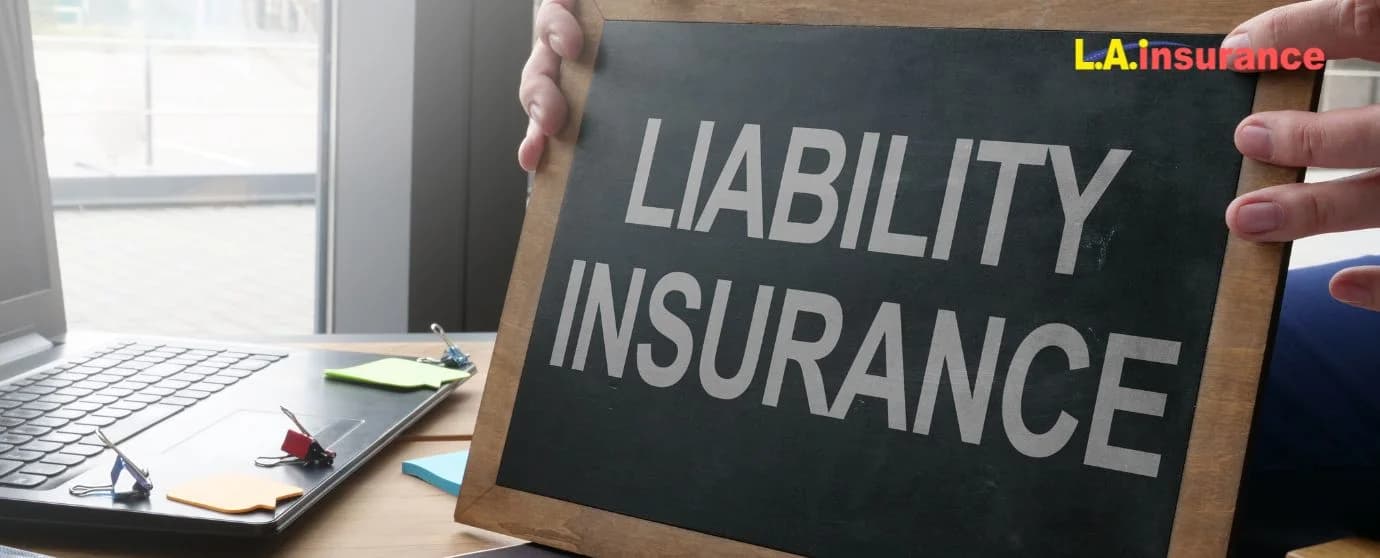
Publish Date: 14-06-2025
Auto Insurance
Last Updated: 15-12-2025
What Is Full Coverage Car Insurance?
If you own a vehicle, the first thing you want to make sure that you’re covered in most situations. That’s why you may think of getting a full coverage auto insurance policy, as its name kind of implies “full protection”. However, is it really possible to get coverage that protects you and your vehicle from all risks? The answer is no. Then, what is considered full coverage car insurance, and what does it really cover?
In this article, we’ll break it all down. We’ll define full coverage auto insurance, tell you what it includes, and how much it costs. Moreover, we’ll compare it with the minimum liability coverage, discuss when it makes sense to get this coverage, and share ways to lower your full coverage automobile insurance cost.
What Does “Full Coverage” Car Insurance Mean?
"Full coverage" isn't an official insurance term. It's a term commonly used by insurers and policyholders to describe a bundle of car insurance coverages. However, it does sound like complete protection for you and your vehicle. Unfortunately, it doesn’t protect you from all the unforeseen events.
Here’s what full coverage car insurance typically consists of:
- Liability auto insurance
- Collision insurance coverage
- Comprehensive car insurance coverage
What Does Full Coverage Car Insurance Cover?
A full coverage auto insurance policy provides protection in many scenarios. However, as we said, it doesn’t mean every situation is covered. It mainly focuses on damage to your vehicle, other people’s property, and potential injuries.
Here's what the liability portion of your full coverage insurance covers for you:
- Cover damage to other drivers’ vehicle and property if you’re at-fault
- Cover medical expenses to other drivers if you’re at-fault
- Provide legal fees if you have been sued after an accident
- Provide compensation for lost wages, and pain and suffering after a severe accident
Please keep in mind that liability insurance is required in most states, except New Hampshire. It has two components: bodily injury liability and property damage liability. It’s primarily carried by drivers not to protect themselves, but rather to protect other drivers on the road. Learn more about what liability auto insurance is and what it covers.
Full coverage also protects you under collision insurance if:
- Your vehicle collides with another vehicle
- Your vehicle collides with a stationary object like a pole, fence, or guardrail
- Your car hit a pothole
- You encounter a situation where your vehicle overturns
Learn more about what is collision insurance coverage and what it covers.
Here’s what the comprehensive part of your full coverage policy covers for you:
- Theft. If your vehicle is stolen.
- Vandalism. Covers damage caused by intentional acts of destruction.
- Natural disasters. Includes damage from storms, hail, hurricanes, floods, or earthquakes.
- Fire.
- Hitting an animal (like a deer)
You can check out what is comprehensive car insurance coverage to understand what your full coverage policy will cover under this policy.
If you have a tight budget and are looking for an affordable full coverage auto insurance policy, contact L.A. Insurance. We offer reliable coverage that protects you from many unforeseen risks at a price you can easily afford. To compare price, find an agent or get a free auto insurance quote for full coverage right away.
What Isn’t Included in Full Coverage Car Insurance?
Many drivers assume full coverage insurance protects them from everything. However, that’s not true. Though it does cover many situations, there are still gaps. In fact, even the most comprehensive auto insurance policy has exclusions. So, what exactly isn’t covered by a full coverage policy? Let’s take a closer look:
- Mechanical Breakdown and Wear and Tear: Your full coverage vehicle insurance won’t cover engine failure, worn-out brakes, or transmission issues. These problems fall under maintenance. However, some car insurance companies might offer mechanical breakdown insurance (MBI) as an add-on with your full coverage policy.
- Item Stolen from Your Vehicle: Full coverage protects your vehicle against theft under comprehensive policy. But it doesn’t offer protection to your personal belongings inside it. For example, if someone steals your laptop from your car, only home insurance or rental insurance might turn out to be useful.
- Medical Expenses Beyond PIP or MedPay: If you get into an accident, personal injury protection (PIP) insurance or medical payment coverage (MedPay) helps with medical bills. However, there are limits. If your costs exceed your policy’s limit, you’ll have to pay out of pocket or rely on health insurance coverage.
- Custom Parts and Upgrades: Your full auto insurance coverage won’t cover any modifications of your vehicle like custom rims, sound system, suspension enhancements, or paint jobs. For that, you’ll need additional insurance such as custom parts and equipment (CPE) coverage.
- Using Your Car for Business: If you use your vehicle for ridesharing or deliveries or any other business purposes, your personal full coverage auto policy won’t cover you in case of accidents or damage. In such a case, you’ll need commercial auto insurance. Learn more about whether your personal auto insurance covers business use.
- Driving Without Permission or a Valid License: If someone takes your vehicle without consent and crashes, your insurance policy might not cover the damage. Similarly, if you drive without a valid license, your claim might get denied.
- Intentional Damage and Racing Accidents: If you cause an accident on purpose, your auto insurance policy won’t pay for it. The same goes for racing, stunts, or reckless driving. Insurance companies exclude high-risk activities from their coverage.
- Gap Between Loan and Car Value: If your car is totaled, you’ll get the compensation equal to the amount of your vehicle’s current market value. However, if you owe more on your loan or lease, you’re going to need gap insurance to cover the difference.
- Natural Disasters Beyond Your Policy Limits: Your comprehensive policy does help with natural hazards like flood, fire, storm, or hail damage. But like always there’s a limit. If repair costs exceed your policy’s max payout, you need to cover the remaining expenses.
Additional Coverages Might Be Included in Your Full Coverage Policy
Apart from liability, collision, and comprehensive coverage, a few additional coverages and add-ons may be included in your full coverage policy based on your state's requirements. For instance, if you live in a no-fault state like Michigan, your full coverage policy might include Personal Injury Protection (PIP). This coverage pays for medical bills regardless of fault.
Also, residents of Maine and New Hampshire are required to carry Medical Payment Coverage (MedPay). In such a case, auto insurers might add MedPay to your full coverage policy. Similar to PIP, it also covers the cost of medical expenses if an accident happens, regardless of who is at fault.
Some state laws require drivers to carry uninsured and underinsured motorist coverage. In those states, your full coverage policy might include this coverage. If a person driving without car insurance hits your car, you’ll be covered by uninsured motorist insurance coverage. Similarly, if someone hits your car and has insufficient insurance coverage, your underinsured motorist coverage will protect you for incurred damages.
Apart from major coverages, there are a few essential add-ons that you might want to include in your full coverage policy to extend your protection, such as roadside assistance and rental car reimbursement. Some policyholders, particularly those who have a loan or lease on their car, also opt for gap insurance as an add-on.
How Do I Know If My Car Insurance Is Full Coverage?
If you’re not sure if you have full coverage insurance, ask your insurance agent or contact your insurance company directly. You can also check online as most car insurance companies provide all the details online.
Check online. To do so, first log into your auto insurance policy online. Check whether you have comprehensive, collision, and liability insurance. If you see all three, you likely have full coverage auto insurance.
Review your insurance declaration page. Your insurance policy has a summary page. This has a list of all car insurance coverages. If comprehensive or collision coverage is missing, you don’t have a full coverage policy.
Call your insurance provider if you’re still unsure. Ask if your auto insurance coverage includes everything needed for full coverage. They can confirm in minutes.
How Much Is Full Coverage Car Insurance?
The average cost of full coverage auto insurance is $175 per month or $2,100 per year. However, the cost can vary significantly. In fact, every driver pays a different price for a full coverage policy. This variation occurs because the amount you have to pay for full coverage depends on several factors, including where you live.
For example, drivers who live in Michigan pay around $2,640 to $4,067 per year, or $220 to $338 per month for a full coverage auto policy. On the flip side, drivers in Vermont pay roughly $1,500 for full coverage, which is 28% less than the national average.
Here are a few major factors that affect your full coverage car insurance rates:
- State laws and requirements
- Your driving history
- Your vehicle type, make and model
- Your location
- Your credit score
- Your age
- Your annual mileage
- Your coverage limit
In brief, if you have a good driving record, meaning no history of recent speeding tickets, accidents, or DUI, you’ll enjoy lower rates for full coverage auto insurance. But in case you drive a luxury vehicle or sports car, the rate will be higher. If your zip code statistically refers to higher traffic accidents, theft rate, and natural disasters, your rate will likely go up, but you can lower it by acquiring an excellent credit score, maintaining a clean driving record, and driving less mileage.
Learn More: How Much Is Car Insurance?
Average Full Coverage Car Insurance Rates by State
State | Avg. Annual Cost of Full Coverage |
Alabama | $2,079 |
Alaska | $2,402 |
Arizona | $2,739 |
Arkansas | $2,489 |
California | $2,935 |
Colorado | $3,212 |
Connecticut | $2,668 |
Delaware | $2,896 |
Florida | $4,210 |
Georgia | $2,976 |
Hawaii | $1,705 |
Idaho | $1,473 |
Illinois | $2,442 |
Indiana | $1,751 |
Iowa | $1,878 |
Kansas | $2,560 |
Kentucky | $2,855 |
Louisiana | $3,998 |
Maine | $1,651 |
Maryland | $2,832 |
Massachusetts | $2,066 |
Michigan | $3,161 |
Minnesota | $2,581 |
Mississippi | $2,350 |
Missouri | $2,607 |
Montana | $2,422 |
Nebraska | $2,402 |
Nevada | $3,660 |
New Hampshire | $1,843 |
New Jersey | $2,938 |
New Mexico | $2,195 |
New York | $4,093 |
North Carolina | $1,957 |
North Dakota | $1,810 |
Ohio | $1,782 |
Oklahoma | $2,749 |
Oregon | $2,096 |
Pennsylvania | $2,436 |
Rhode Island | $2,539 |
South Carolina | $1,970 |
South Dakota | $2,306 |
Tennessee | $2,090 |
Texas | $2,573 |
Utah | $2,128 |
Vermont | $1,506 |
Virginia | $2,161 |
Washington | $1,858 |
West Virginia | $2,224 |
Wisconsin | $1,950 |
Wyoming | $1,759 |
District of Columbia | $3,016 |
Source: Bankrate (2025)
What’s the Difference Between Full Coverage and Liability Auto Insurance?
Liability auto insurance and full coverage insurance aren’t the same thing! We all know that, right? Liability auto insurance covers bodily injury and property damage liability you cause to others. It doesn’t cover your own vehicle. Most importantly, it’s mandatory for all U.S. drivers except for New Hampshire.
In contrast, full coverage insurance is optional, which includes comprehensive coverage and collision insurance, along with liability insurance. Learn more about the difference between liability insurance Vs. full coverage auto insurance.
Do I Need Full Coverage Auto Insurance?
The simple answer is it depends. As we said, full coverage insurance isn’t legally required, but it makes sure robust protection for your vehicle. If your vehicle is new, expensive, it would be ideal to maintain full coverage protection.
Sometimes getting full coverage, even for an old vehicle, is a smart decision. If you have a strict financial budget and can’t even afford to replace or repair your old vehicle if it gets damaged or totaled in an accident, you should consider getting a full coverage as well.
Let’s say your old vehicle’s market value is around $12,000. If it gets totaled in a crash, and you don’t have the money to purchase another vehicle, your full coverage policy could be really useful as it will compensate you with $12,000 (minus deductible).
You also need a full coverage policy if your car is leased or purchased on loan. Most lenders mandate full coverage policy for drivers who don’t own the vehicle outright.
Moreover, you should consider getting full coverage auto insurance if you live in high-risk areas. A high-risk area refers to places with a higher chance of accidents, theft, vandalism, and natural disasters such as floods, fires, or storms.
It's worth noting that not every driver needs full coverage insurance. If your vehicle is too old and its value is low, the cost of comprehensive and collision coverage may outweigh the benefits. In this case, you might save money by opting for liability-only insurance. Also, if you’re a driver who rarely uses your car, you may manage just fine with minimal insurance protection.
Learn More: Do you need full coverage car insurance on a financed car?
How Can I Lower Full Coverage Car Insurance Costs?
Full coverage insurance can be expensive. But there are ways to save. For instance, if you’re a good driver with an excellent credit score, you can get a cheaper full coverage auto insurance rate.
To reduce your car insurance costs for a full coverage policy, do the following:
- Increase your deductible
- Look for car insurance discounts
- Bundle polices (e.g., home and auto)
- Compare multiple insurance quotes
- Maintain clean driving record
- Drop coverage if it’s unnecessary
Learn More: How to Lower Car Insurance
Is Full Coverage Car Insurance Worth It?
Full coverage vehicle insurance is absolutely worth it, especially if you’re driving an expensive vehicle and have the budget for it. At L.A. Insurance, we recommend maintaining a full coverage auto policy for cars that are new, leased, or purchased with an auto loan. Plus, it’s worth investing in full coverage for drivers living in high-risk areas for accidents, theft, vandalism, or natural disasters. However, if your vehicle has a low market value, sticking with liability-only insurance is sufficient.
Frequently Asked Questions (FAQs)
What is full coverage car insurance in California?
In California, full coverage auto includes liability, collision, and comprehensive coverage. If you have a loan or lease, your lender will likely require it. As of December 2022, the minimum required liability insurance limit for California is 15/30/5, which means $15,000 for bodily injury per person, $30,000 for bodily injury per accident, and $5,000 for property damage per accident. Apart from liability insurance, your full coverage policy can extend your protection if you include personal injury protection (PIP), which covers medical bills after an accident.
Does full coverage car insurance cover towing?
Standard full coverage auto insurance doesn’t pay for a tow truck if your vehicle suddenly stops. However, if you have a full coverage policy, you can easily add roadside assistance as an add-on and get towing services when needed. This add-on covers towing, jump-starts, and lockouts. If you’re unsure, check your auto insurance policy or read our article on does full coverage car insurance cover towing.
How does full coverage insurance work if my car is totaled?
If your vehicle is a total loss, full coverage auto pays its market value. Collision covers accidents, and comprehensive helps with theft, vandalism, weather hazards, fire, storms, and animal collision. However, if the car is bought on loan, and if your loan exceeds the payout, you need gap insurance to cover the difference.
Do I have to have full coverage on a financed car?
Yes. If you have a loan, your lender will require you to carry full coverage insurance so that they can protect their financial interest.
Is comprehensive car insurance full coverage?
Comprehensive car insurance is a part of full coverage. It covers theft, flood, fire, storm, earthquake, vandalism, collision with an animal and other non-collision damages.
Is PIP included in full coverage auto insurance?
Not always. Personal Injury Protection (PIP) insurance is required in some states (e.g., Michigan, Florida, Delaware, Kansas, Massachusetts, Minnesota, New Jersey, New York, North Dakota, Hawaii, Oregon, Utah) where full coverage may include PIP. It covers medical bills, lost wages, and pain and suffering after an accident.
Does full coverage insurance cover if my 16-year-old son is driving my car?
Yes, but only if he’s listed on your car insurance policy. Most car insurance companies require teenage drivers to be added to ensure coverage. However, adding a young driver may increase your car insurance cost due to their insufficient driving experience, absence of credit history and other relevant factors. The best policy here is to look for car insurance discounts to lower your rates.
Tag :
Auto insurance
Comercial Auto








